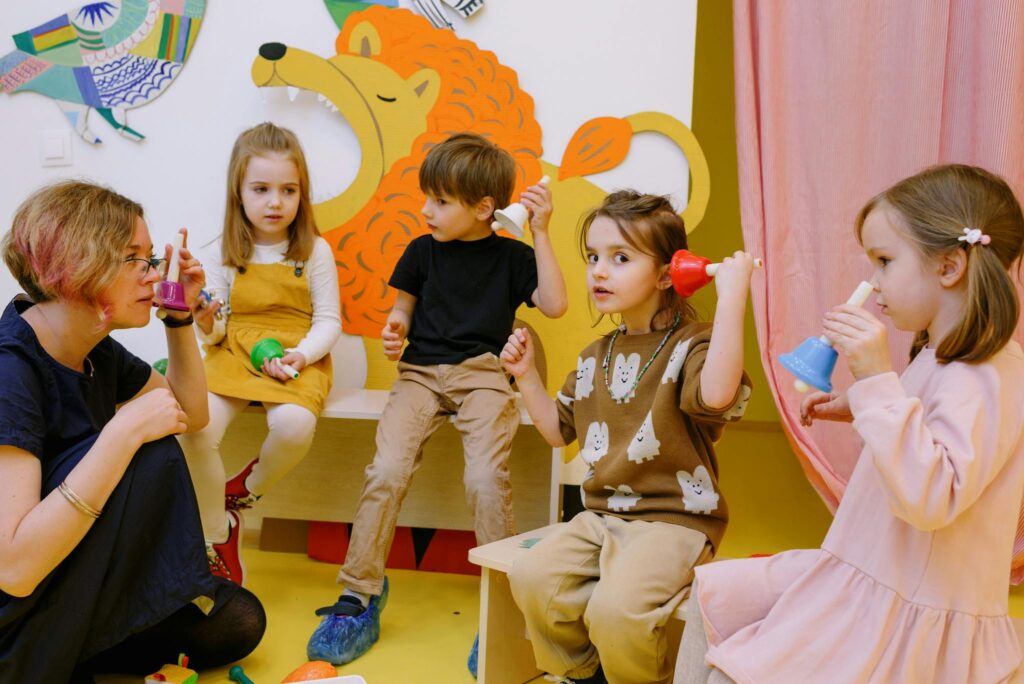Discipline vs. Punishment: Understanding the Difference in Education

In both educational settings and home environments, discipline and punishment are often used interchangeably. However, they represent fundamentally different approaches to managing behavior. Understanding the distinction between the two is essential for fostering positive behavior, promoting growth, and creating a supportive learning environment for students.
You can also check out our podcast about analyzing behaviors here.
What is Discipline?
Discipline refers to teaching and guiding individuals on how to behave appropriately, learn from their mistakes, and make better choices. It’s a long-term approach that emphasizes self-control, responsibility, and character development. Discipline seeks to educate children about the consequences of their actions, help them understand appropriate behavior, and foster a sense of internal motivation to follow rules and expectations.
Key Features of Discipline:
- Proactive, preventative: Discipline often involves setting clear expectations and teaching students how to act in advance to prevent misbehavior.
- Focus on learning: The goal is to help the child learn from their behavior and understand why their actions were wrong.
- Long-term development: Discipline seeks to develop self-regulation, personal responsibility, and good decision-making skills in students.
- Respectful and empathetic: Discipline involves open communication and mutual respect. Teachers or parents engage with the child to understand the reasons behind their behavior.
- Constructive consequences: Discipline uses consequences that are meant to teach, such as helping students correct mistakes or reflect on their actions, rather than simply punishing them.
Examples of Discipline:
- Restorative practices: Instead of simply punishing a student for misbehavior, restorative practices may involve having the student reflect on how their actions impacted others and finding ways to make amends.
- Positive reinforcement: Rewarding students for good behavior, effort, or kindness to encourage them to repeat these actions in the future.
- Teaching self-regulation: Helping students understand how to manage their emotions and behavior, such as by teaching coping strategies for frustration or stress.
- Setting clear expectations and modeling behavior: Teachers can model appropriate behaviors, teach classroom routines, and set clear expectations for behavior.
What is Punishment?
Punishment, on the other hand, is a reactionary response to undesirable behavior, intended to inflict discomfort or consequence to deter the behavior from happening again. Punishment focuses on the short-term correction of behavior, often without addressing the underlying causes of the misbehavior. The primary aim of punishment is to decrease undesirable behaviors quickly, but it does not necessarily promote learning or long-term change in behavior.
Key Features of Punishment:
- Reactive: Punishment is typically applied after a misbehavior has occurred, rather than as a proactive measure.
- Short-term focus: The goal is to stop the behavior immediately, but it doesn’t necessarily encourage understanding or self-reflection.
- External motivation: Punishment relies on external consequences (such as detention, time-outs, or loss of privileges) to control behavior, rather than promoting intrinsic motivation or internal reflection.
- Can be damaging: If used excessively or harshly, punishment can damage relationships, lower self-esteem, and contribute to resentment or rebellion.
Examples of Punishment:
- Time-out: The student is removed from the situation as a consequence of misbehavior, with the goal of isolating them to prevent further disruption.
- Detention: Assigning extra tasks, such as staying after school, as a consequence of misbehavior.
- Loss of privileges: Taking away something the student enjoys, such as recess time, extracurricular activities, or access to certain resources, as a punishment for misbehavior.
- Verbal reprimands: Scolding or harshly criticizing a student for their behavior.
Key Differences Between Discipline and Punishment
| Aspect | Discipline | Punishment |
| Goal | To teach, guide, and help the child learn self-regulation and responsibility. | To stop undesirable behavior quickly by applying a consequence. |
| Approach | Proactive, long-term, and educational. | Reactive, short-term, and corrective. |
| Focus | Understanding and learning from mistakes. | Imposing discomfort to deter behavior. |
| Emotional Impact | Builds trust, respect, and positive relationships. | May create fear, resentment, and negative emotions. |
| Motivation | Encourages intrinsic motivation and self-reflection. | Relies on external consequences to control behavior. |
| Effectiveness | Promotes long-term change and growth. | May stop the behavior temporarily, but doesn’t address underlying causes. |
| Methods | Positive reinforcement, restorative practices, teaching appropriate behaviors. | Time-outs, detention, loss of privileges, scolding. |
Why Discipline is More Effective Than Punishment
- Promotes Understanding: Discipline helps children understand why their behavior was inappropriate and provides opportunities for growth. Students are more likely to repeat good behavior if they understand its positive impact, rather than simply avoiding bad behavior due to fear of punishment.
- Builds Self-Control: Discipline teaches children to regulate their own behavior and emotions, which is an essential skill for lifelong success. Punishment may stop a behavior temporarily but doesn’t teach self-control or decision-making.
- Fosters Positive Relationships: When discipline is applied with empathy, respect, and consistency, it strengthens the teacher-student and parent-child relationship. Punishment, however, can create a power struggle, leading to resentment and a breakdown in trust.
- Encourages Positive Behavior: Discipline uses positive reinforcement to encourage desired behaviors, building a positive classroom or home environment. Punishment often focuses solely on negative behaviors, which can lead to a more negative atmosphere and discourage engagement.
- Addresses the Root Causes: Discipline encourages reflection and addresses the root causes of misbehavior, such as unmet needs, misunderstandings, or social challenges. Punishment may not address the root cause and can sometimes exacerbate underlying issues (such as a child acting out due to stress or insecurity).
Practical Tips for Implementing Discipline Over Punishment
- Set Clear Expectations: At the start of the year (or at the beginning of any new behavioral framework), outline your expectations for behavior and communicate them clearly to students. Be sure to model and reinforce these behaviors regularly.
- Use Positive Reinforcement: Praise and reward positive behavior when you see it. This helps reinforce desired actions and shows students what is expected of them. Rewards can be as simple as verbal praise, extra responsibilities, or even a small token.
- Teach Conflict Resolution Skills: Equip students with tools to resolve conflicts on their own, such as using “I feel” statements, taking deep breaths, or asking for help. This empowers them to handle difficult situations without resorting to misbehavior.
- Create a Restorative Environment: When misbehavior happens, use restorative practices where students can reflect on how their actions affected others, and think of ways to make amends. This helps students understand the impact of their actions and encourages accountability.
- Be Consistent and Fair: Both discipline and punishment require consistency, but discipline focuses on guiding students while being fair and just. If students know that rules are applied fairly and consistently, they are more likely to respect and follow them.
- Listen and Be Empathetic: Sometimes misbehavior is rooted in personal struggles or unmet needs. Take the time to listen to your students, show empathy, and offer support. This can help address the underlying issue and prevent future behavioral problems.
- Promote a Growth Mindset: Encourage students to view mistakes as opportunities for growth. Emphasize effort over innate ability, and help them understand that learning from failure is an important part of becoming better people and students.
Conclusion
In summary, discipline is a long-term approach that focuses on teaching, guiding, and helping students grow in their ability to make responsible choices, while punishment is a short-term, reactive approach focused on imposing consequences to stop undesired behavior. Discipline encourages understanding, responsibility, and self-regulation, while punishment may be effective temporarily but doesn’t foster long-term behavioral change. When educators and parents use discipline instead of punishment, they help students build the skills and mindset needed for personal growth, academic success, and positive social behavior.
